Screening and Color For a Blank Wall
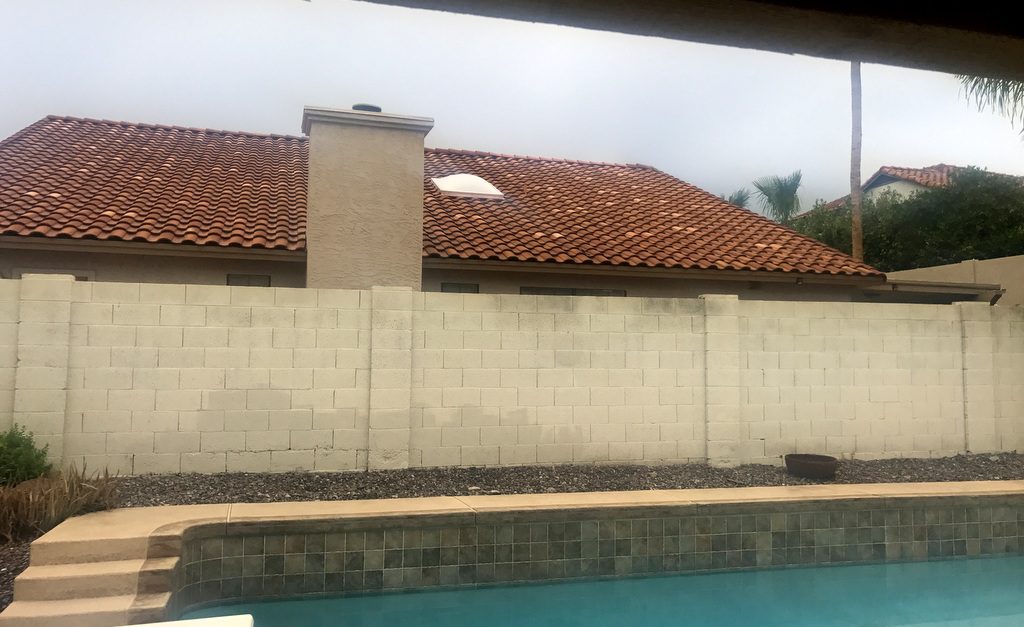
Have you ever encountered this landscaping challenge? This blank wall is rather boring, and the home behind it dominates the view. So what would you do to fix these problems?
I faced this dilemma last month at a client’s home. The pool was the main focal point of the landscape, and the dull wall wasn’t doing it any favors. In coming up with a solution, we had to select a plant that was relatively low-litter, due to the proximity to the pool and that looked attractive throughout the entire year because of the high-profile location.
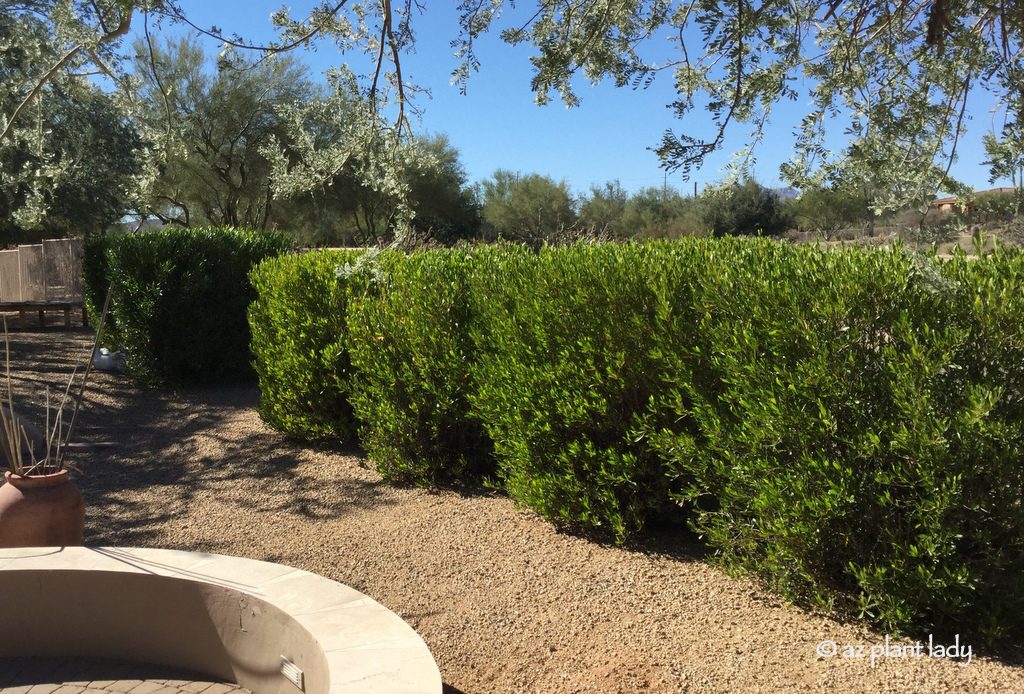
Hop Bush (Dodonaea viscosa)
I recommended adding three hop bush (Dodonaea viscosa). These are tall, evergreen shrubs that thrive in arid climates such as ours.
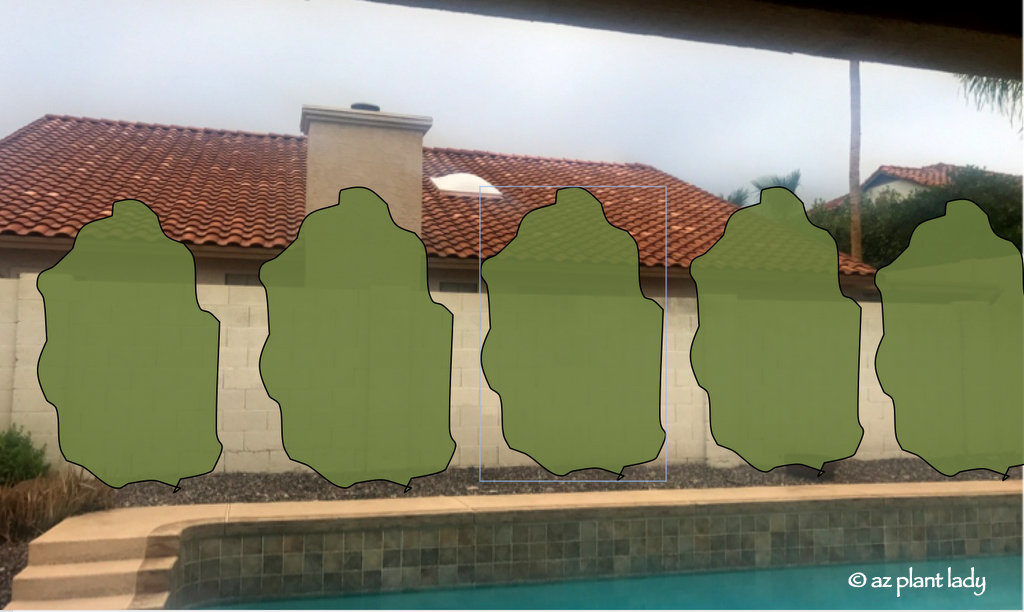
One of the many things that I love about them is their versatility. They thrive in full sun and light shade, and can be allowed to grow up to 12 feet tall, or maintained at a lower height.
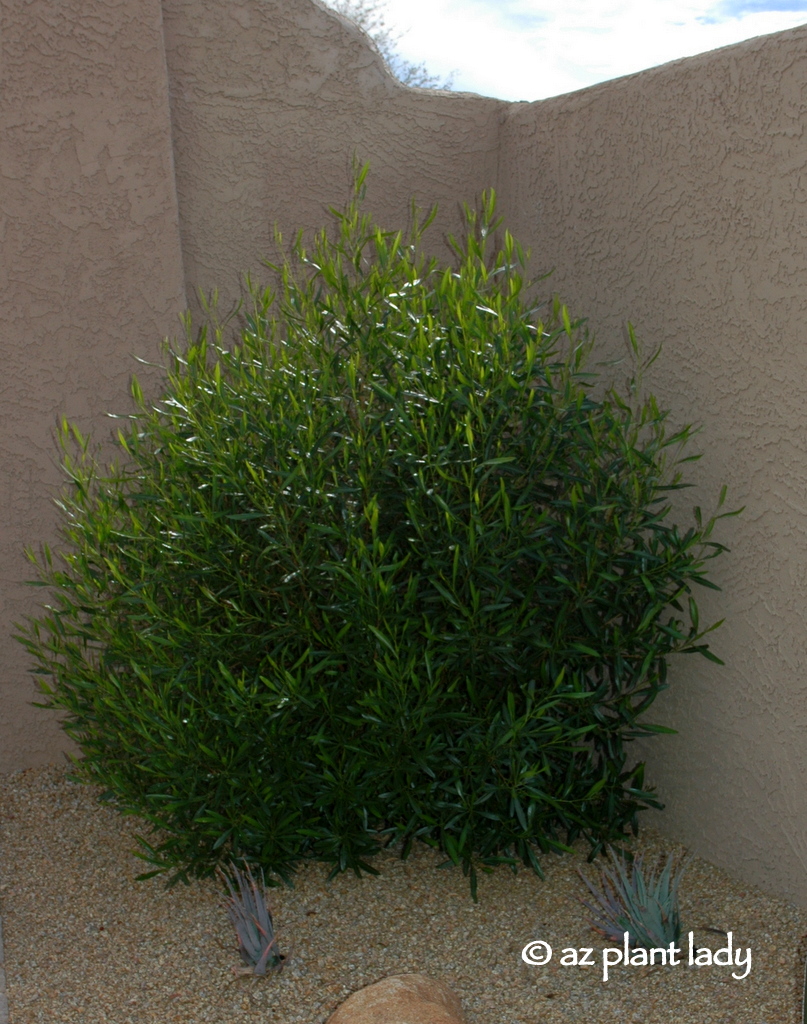
Hop bush can be allowed to grow to their natural shape…
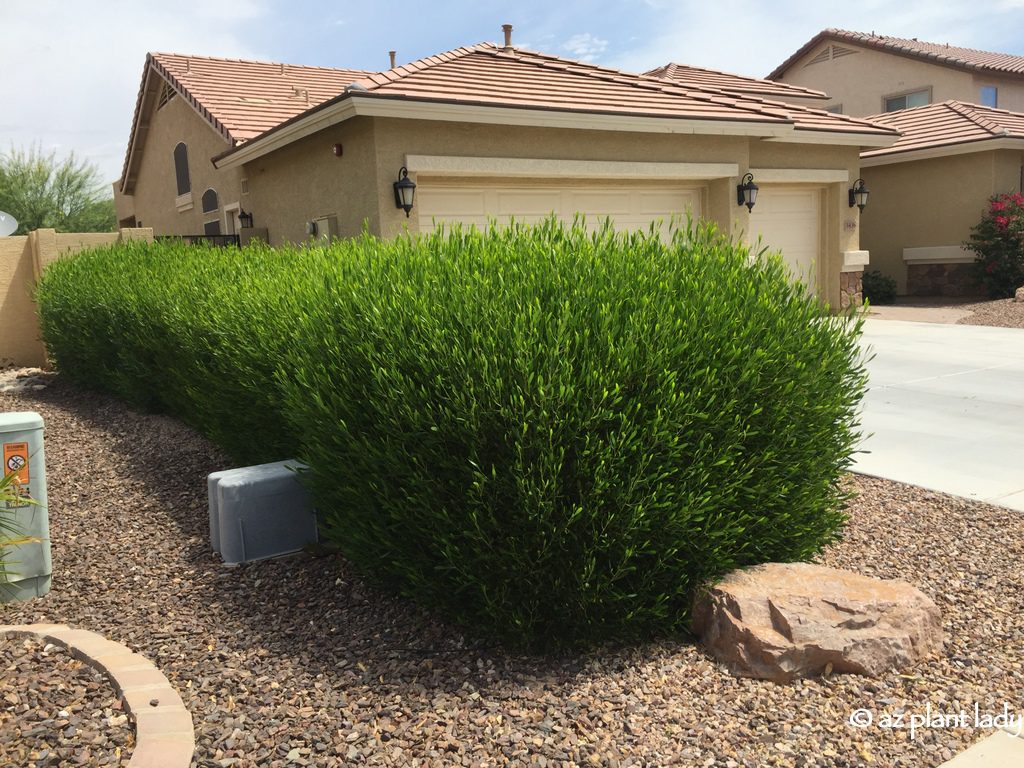
…or pruned more formally.
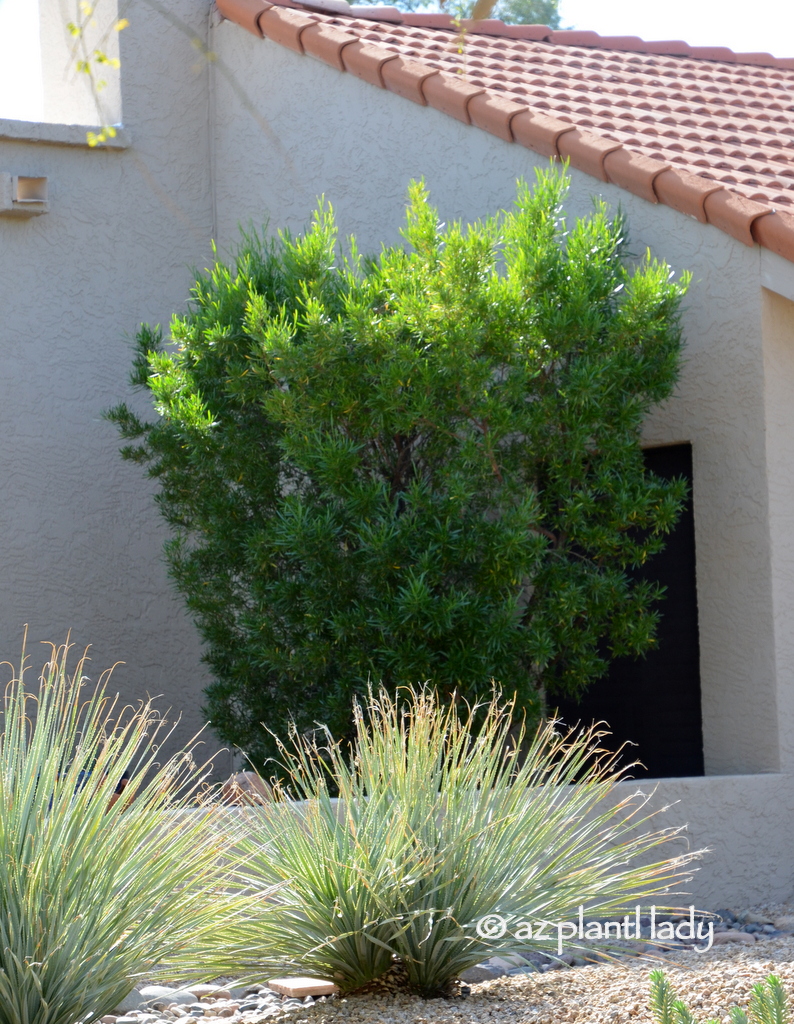
For the area behind the pool, I recommend having it grow to its full height, which will help provide privacy while the attractive foliage will add a welcome screen of green throughout the year.
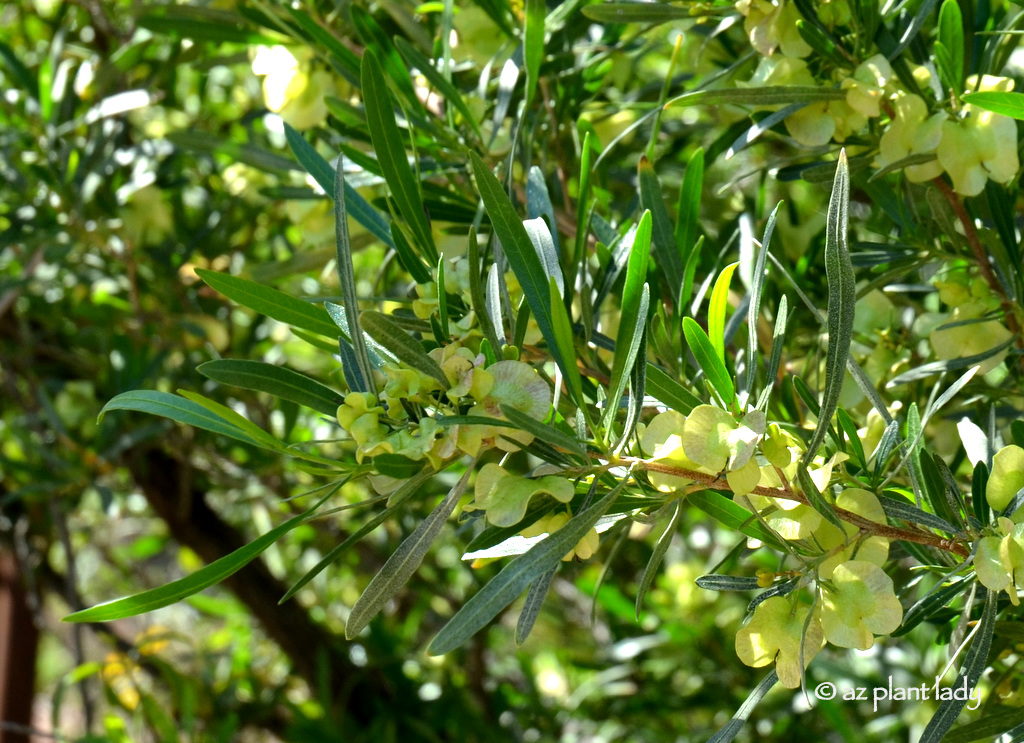
evergreen shrubs Hop bush flowers
Hop bush does produce light green, papery flowers in spring, but they aren’t particularly showy. So, we need to add a color element to the area behind the pool.
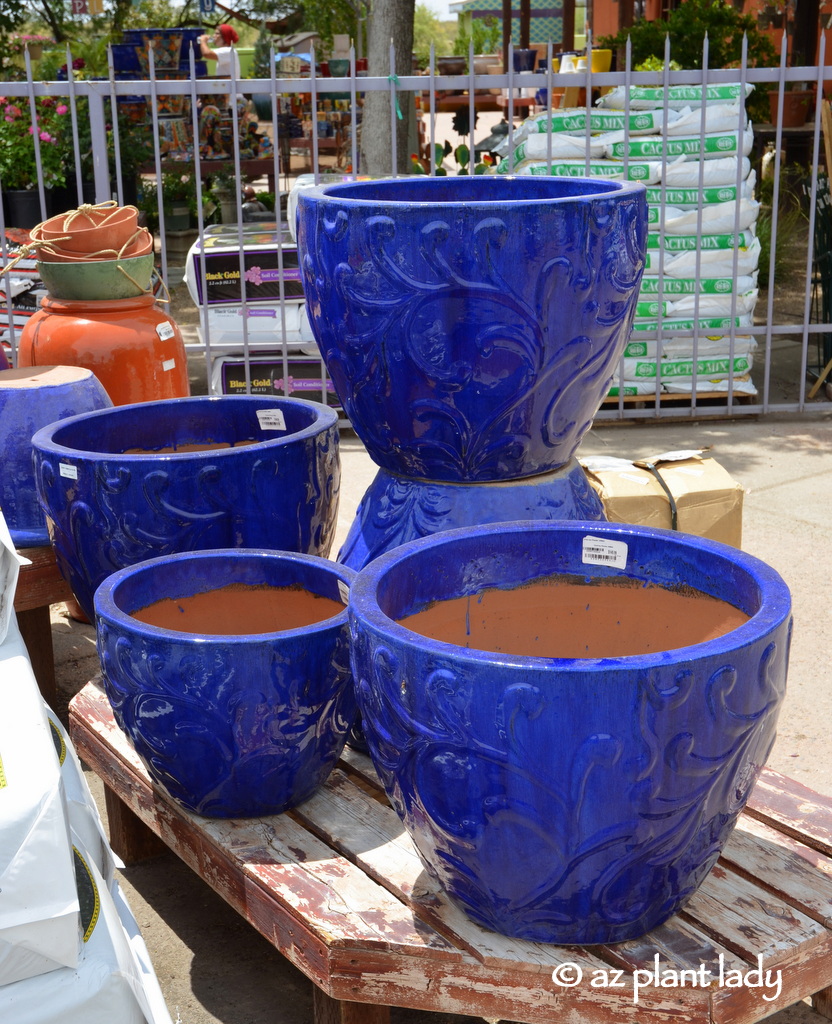
One of my favorite ways to add color to any landscape is to incorporate brightly colored containers in shade of blue, purple, or orange. That way, whether plants are in bloom or not, there is always a bright splash of color.
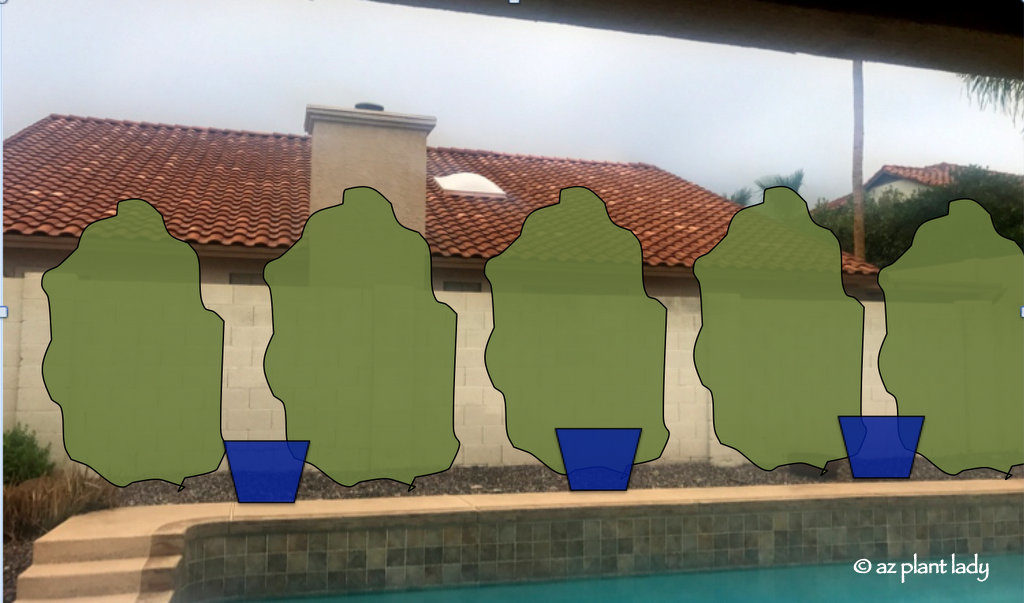
For this area, I recommended adding 3 blue pots, equally spaced.
Now it was time to decide what to plant in each pot. The client wanted a low-maintenance choice that wouldn’t require a lot of water.
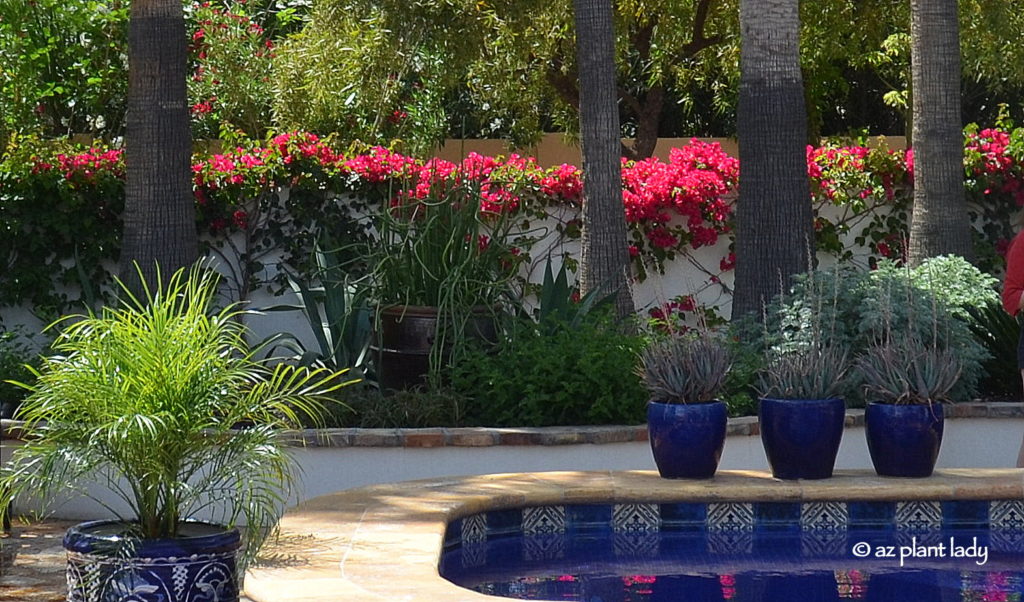
Immediately, I remembered touring a landscape that had blue containers filled with ‘Blue Elf’ aloe. Even though the aloe had finished blooming for the year, their spiky blue-gray foliage added nice color contrast.
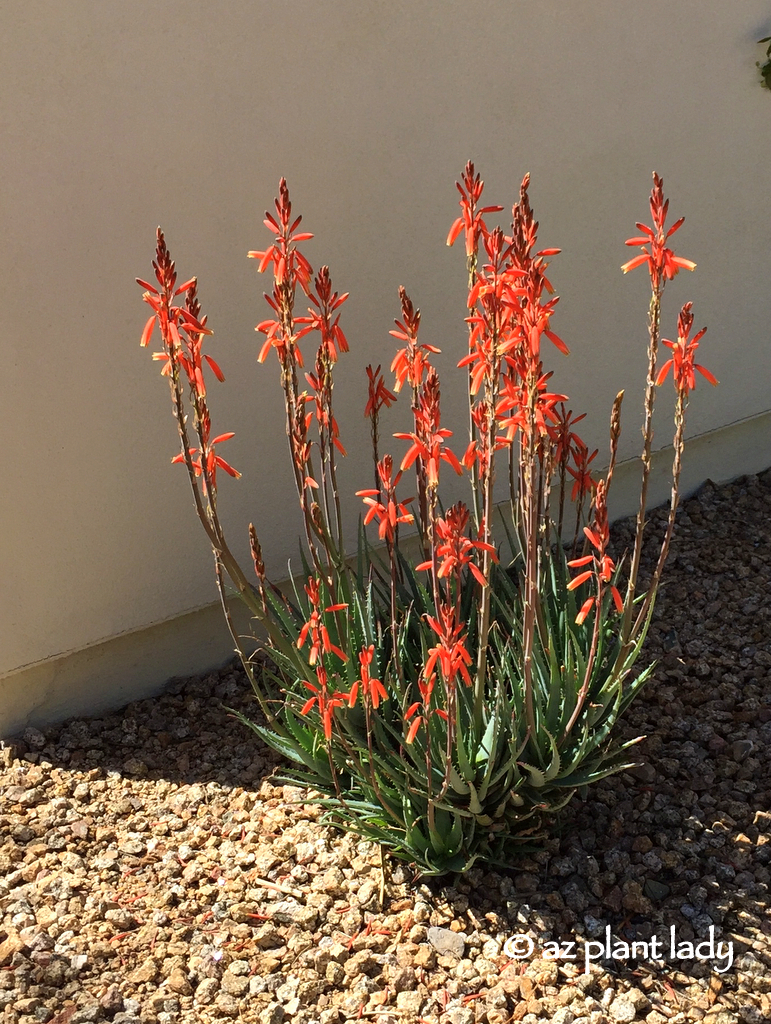
This small aloe is one of my favorite succulents for several reasons. First, it begins to bloom in late winter, lasting into spring adding welcome color to cool-season landscapes. Hummingbirds can’t resist the flowers either.
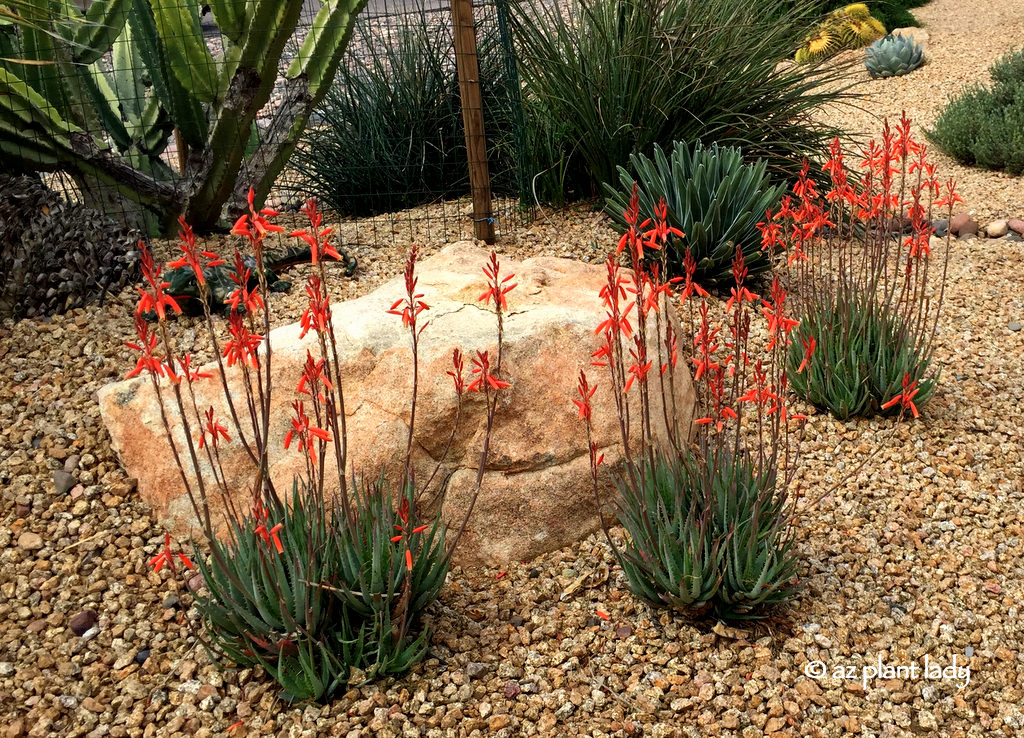
This aloe is best showcased when grouped together and thrives in full sun, unlike most aloe which prefer filtered shade. Finally, it is hardy to 15 degrees F. so cold winters seldom bother it.
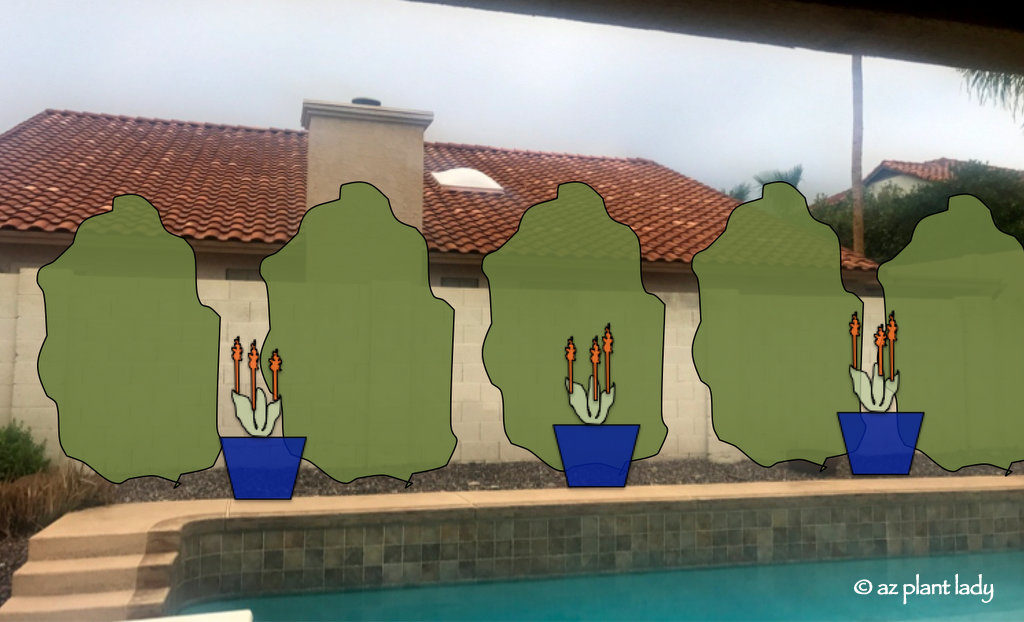
And so, here is the planting that I suggested to my client that will provide year round beauty and privacy.
*Do you have a favorite plant or group of plants that you like to use against bare walls?
Visit to a Client’s Desert Garden

 Noelle Johnson, aka, 'AZ Plant Lady' is a author, horticulturist, and landscape consultant who helps people learn how to create, grow, and maintain beautiful desert gardens that thrive in a hot, dry climate. She does this through her consulting services, her online class Desert Gardening 101, and her monthly membership club, Through the Garden Gate. As she likes to tell desert-dwellers, "Gardening in the desert isn't hard, but it is different."
Noelle Johnson, aka, 'AZ Plant Lady' is a author, horticulturist, and landscape consultant who helps people learn how to create, grow, and maintain beautiful desert gardens that thrive in a hot, dry climate. She does this through her consulting services, her online class Desert Gardening 101, and her monthly membership club, Through the Garden Gate. As she likes to tell desert-dwellers, "Gardening in the desert isn't hard, but it is different."
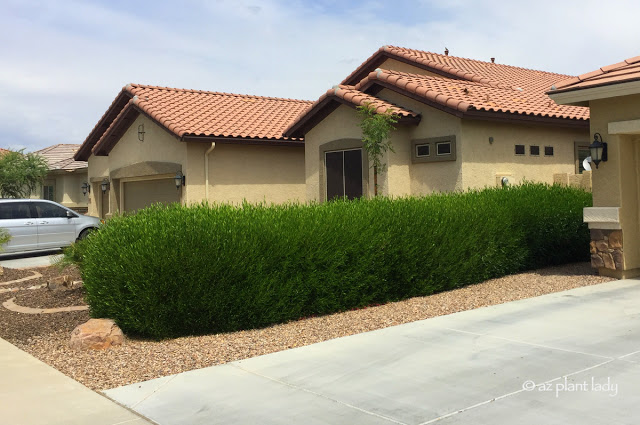
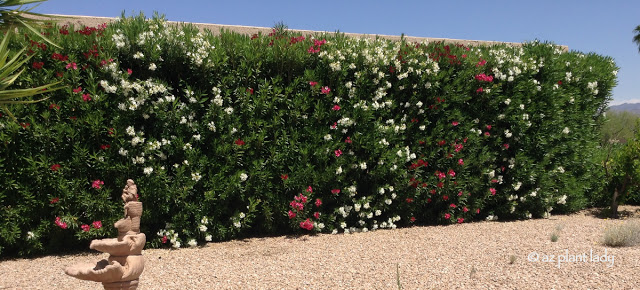
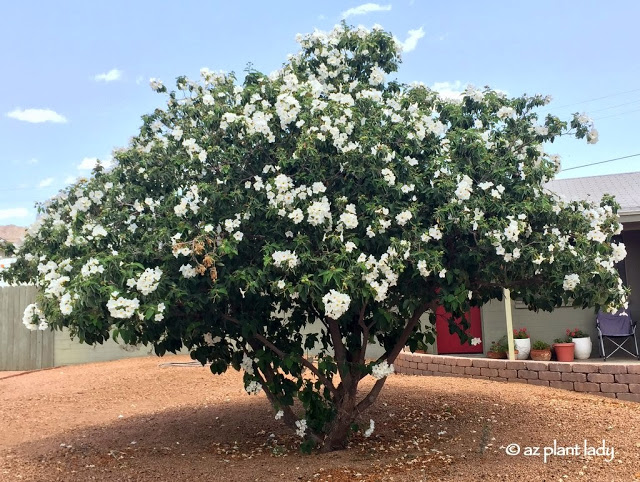
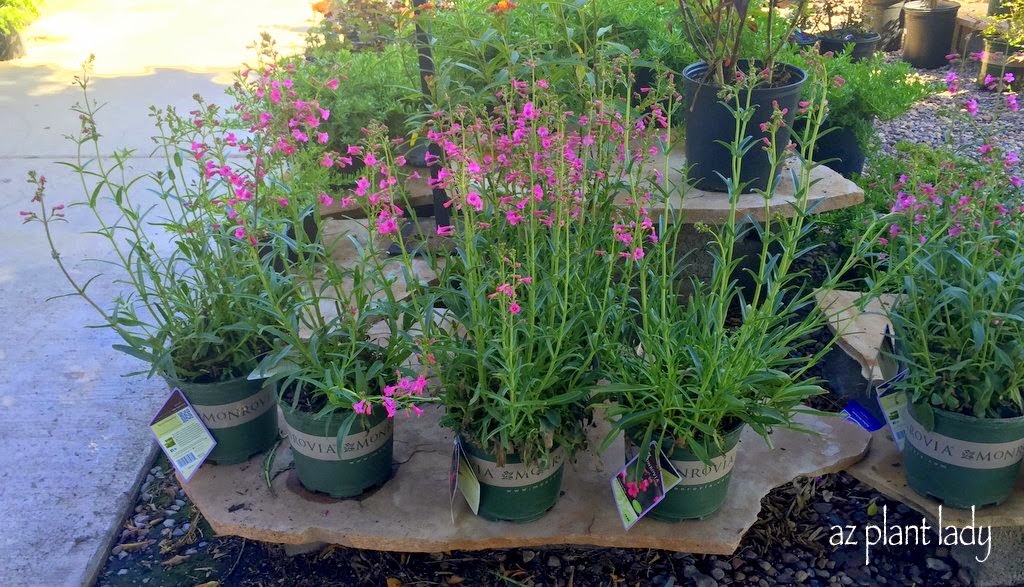
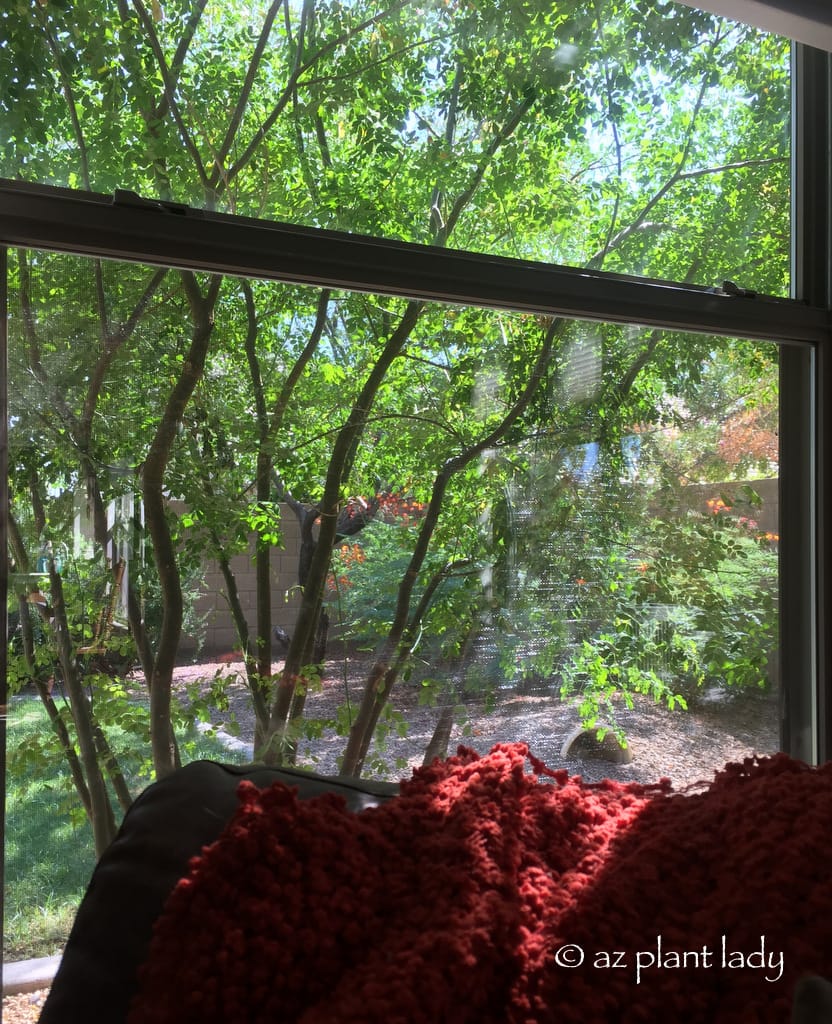







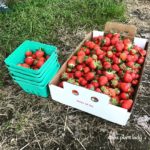
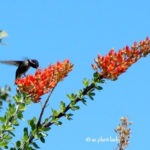
Do you find that ceramic pots get too hot in summer for plants? I just moved here in January, and everything I planted in a ceramic pot died during the June heat wave. Despite being in partial shade the soil in the pots heated up so much it cooked them. Plants in plastic or terra-cotta fared better. What plants might do well in that situation?
Hello
I was trying to look up the Hop Bush, is it also called a “Hopseed Bush” or is that a different plant?.
I like the idea of hiding a block wall.
Growing them as trees, what about roots by the pool? I’m afraid to plant anything bigger than middle size bush or pigment palms by the pool because of this reason…
I’ve lived here most of my 54 years and grow plants in pots in partial shade and full sun. A few dilemmas I’ve faced are choosing the correct plant for the pot, location of pot, and watering correctly – just because it gets hot, doesn’t mean a lot more water is necessary. Other important factors are making sure you have soil compatible with pots, good drainage, and fertilizer (again, depending on the plant) and be sure to plant early enough – before the heat hits – to establish a good root system.
Hi Bobbi,
It is one and the same.
Hi Natasha,
The roots of shrubs are typically not invasive and hop bush are recommended for use near pools.
Hello Cyndi,
This is a common problem. The air temperatures in summer get so hot that they literally ‘cook’ the roots of plants in small pots. The key to get plants to grow in containers through the summer is to use large containers, which provide insulation for the roots. I would recommend selecting ones that are at least 1 1/2 feet wide at the top and deep. Succulents do best in pots such as agave, elephants food, lady’s slipper, golden barrel cactus, etc.